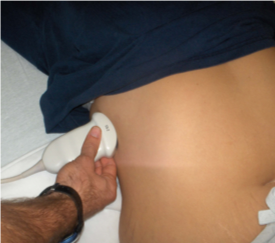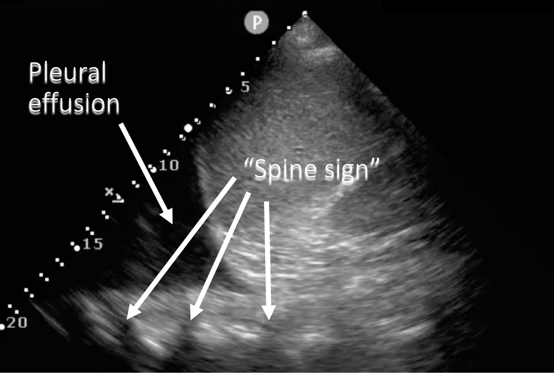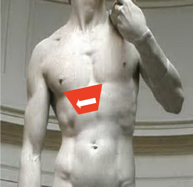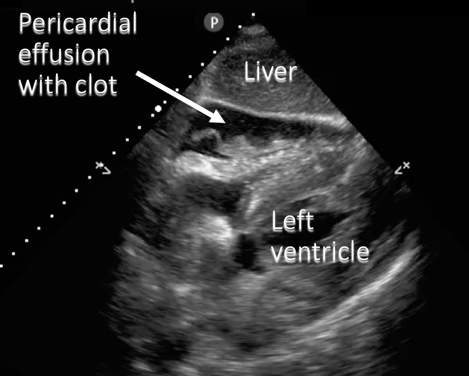Thoracic and Pericardial Fluid
Thoracic Fluid

Narration
So in addition to looking for fluid in the peritoneal and pelvic spaces we can move a little more superior really form the same position that we do the Morrisons pouch view and just angle into the thorax for fluid where we are looking for pleural effusion or in the case of trauma, a hemothorax.
Thoracic Fluid

Narration
If you see fluid here we should see this sort of black triangle wedge and we’ll also see the vertebral bodies or the lateral thoracic processes continuing up behind the chest wall which you don’t normally see unless there is fluid to allow the sound waves to pass through and this is known as the spine sign. So this is showing a pleural effusion or fluid in the chest cavity that is over the diaphragm and allowing us the see through to the spine.
Pericardial Fluid

Narration
The other fluid in the chest we may be looking for is fluid in the pericardial cavity. This is a subxyphoid view where we are using the liber as a window to look into the pericardium and around the heart.
Thoracic and Pericardial Fluid


Narration
You can see this fluid that is surrounding the heart, there is actually some clot in this case, you can see the left ventricle and the liver anteriorly, and this is a pericardial effusion or fluid around the heart.